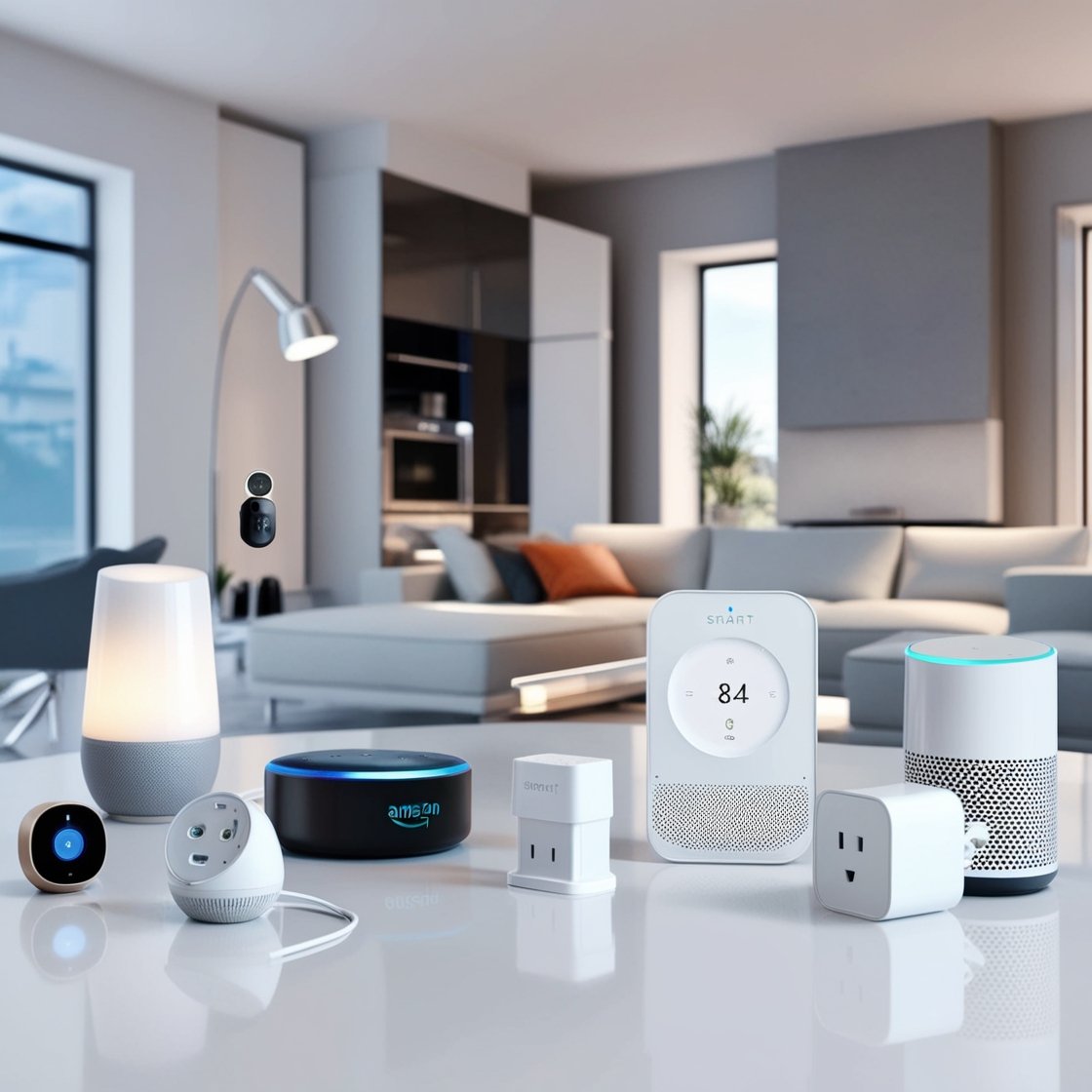The world of smart home devices can seem overwhelming for beginners. With the rapid growth of IoT (Internet of Things) and connected technologies, countless gadgets promise to make your home more secure, energy-efficient, and convenient. In this guide, we’ll dive into the key factors you need to consider when choosing the right smart home devices as a beginner, along with an in-depth look at some of the top products in the market.
1. Understanding Your Needs: Why Invest in Smart Home Devices?
Before purchasing any smart home device, it’s important to first assess your goals. Ask yourself:
– Do you want to increase home security?
– Are you looking to automate daily tasks like controlling lights and thermostats?
– Is energy efficiency a priority?
– Are you more focused on entertainment, such as smart speakers and home assistants?
Once you understand your needs, it becomes easier to identify the categories of smart devices that will be most beneficial.
2. Core Categories of Smart Home Devices
As a beginner, it’s important to start with core categories that provide immediate value and ease of use. Here are some primary categories you should consider:
Smart Lighting: Appliances such as smart switches and bulbs allow you to adjust lighting with voice commands or apps.
Smart Security Cameras: Cameras that provide live feeds of your home, often integrated with motion detection and cloud storage features.
Smart Thermostats: Energy-efficient devices that let you adjust your home’s temperature remotely or set schedules based on your habits.
Smart Plugs: Simple and affordable devices that let you turn regular appliances into smart ones by controlling them remotely.
Smart Speakers/Assistants: Devices like Google Nest, Amazon Alexa, or Apple’s HomePod, which act as central hubs for voice commands, controlling other connected devices in your home.
3. Compatibility: Choosing Devices that Work Together
When choosing smart home devices, ensure they are compatible with each other and work within the same ecosystem. Most smart home ecosystems revolve around popular voice assistants such as:
Amazon Alexa
Google Assistant
Apple HomeKit
For example, if you already have an Amazon Echo, it might make sense to buy other Alexa-compatible devices. This way, you’ll control everything with a single app or voice assistant.
4. Ease of Use and Installation
For beginners, ease of use and installation is crucial. Many smart devices offer a simple plug-and-play setup and provide clear app instructions for first-time users. Look for products with strong customer reviews highlighting how beginner-friendly they are.
Examples of easy-to-install smart devices include:
Philips Hue Bulbs: These require only the replacement of traditional bulbs and pairing with an app or hub.
TP-Link Kasa Smart Plugs: Plug them in and connect to the app for remote control.
Nest Thermostat: A smart thermostat that is simple to install with clear instructions, allowing remote temperature control and energy savings.
5. Security Considerations
Security is another major factor when setting up smart home devices. Since many smart devices are connected to your home Wi-Fi network, it’s essential to ensure devices are not vulnerable to hacking. Here are some key tips:
Use strong, unique passwords for your Wi-Fi network and smart device accounts.
Enable two-factor authentication (2FA) wherever possible.
Keep your devices’ firmware up to date to ensure they have the latest security patches.
Also, choose devices from reputable brands that prioritize user security and privacy.
6. Smart Home Devices for Beginners: Top Recommendations
Here are some top beginner-friendly smart home devices to consider:
Amazon Echo Dot (4th Gen): A compact smart speaker with Alexa that can control compatible smart devices, answer questions and play music.
Google Nest Mini (2nd Gen): A small but powerful smart speaker that integrates with Google Assistant, making it easy to manage other devices like lights and thermostats.
Wyze Cam v3: A budget-friendly security camera with night vision, motion detection, and 24/7 recording. Perfect for keeping an eye on your home from anywhere.
TP-Link Kasa Smart Plug HS103: This smart plug works with Alexa and Google Assistant, allowing you to turn devices on or off remotely.
Philips Hue White & Color Ambiance Bulbs: A versatile smart lighting system that lets you control the color and intensity of your lights from an app or voice command.
Eufy Video Doorbell: A high-quality video doorbell that offers crystal clear footage, motion detection, and integration with smart assistants.
Nest Thermostat: A smart thermostat that learns your preferences over time, optimizing your heating and cooling for both comfort and energy efficiency.
7. Budget Considerations
As a beginner, you don’t need to go all-in with high-end products right away. Many affordable options offer excellent features without breaking the bank. For instance, Wyze smart cameras and TP-Link smart plugs are both cost-effective choices to get started with home automation.
Additionally, some smart home ecosystems may require a hub to manage all devices. For example, Philips Hue lighting requires a hub, which adds to the initial cost, while other brands, such as TP-Link, do not.
8. The Future of Smart Homes: Growing with Your System
The beauty of smart homes is that they are scalable. You can start small with a couple of devices and add more as your needs evolve. Most ecosystems allow seamless integration, so upgrading and adding devices becomes simple as your comfort with smart technology grows.
Additionally, technological advancements will likely make future smart home appliances even more user-friendly with improved automation and energy-saving features.
9. Conclusion
Choosing the right smart home devices as a beginner doesn’t have to be daunting. Start by assessing your needs, selecting devices that are compatible with each other, and focusing on ease of use and security. By starting with a few key gadgets, you’ll quickly find the benefits of smart home technology in improving your daily life, from enhanced security to energy savings and convenience.
With the right smart home devices, you’ll be able to enjoy the convenience of automation and the satisfaction of a tech-enhanced living space—one gadget at a time.





